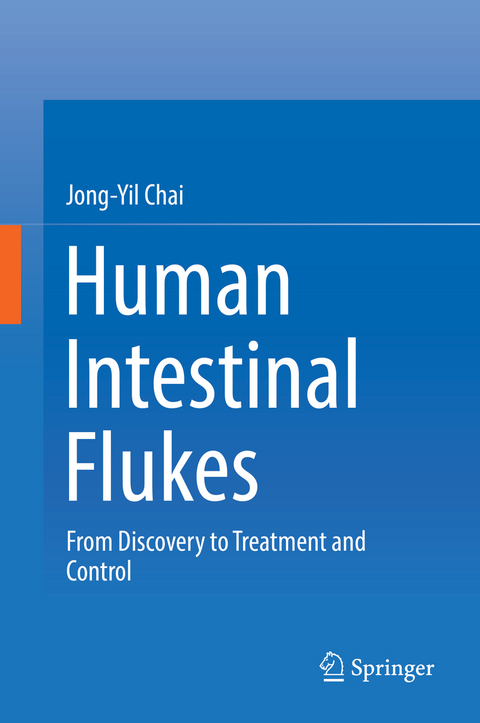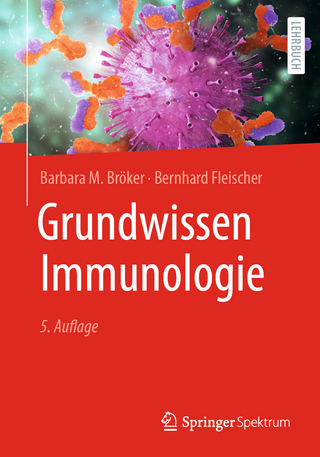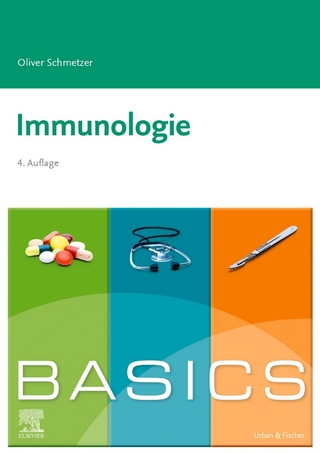
Human Intestinal Flukes
Springer (Verlag)
978-94-024-1702-9 (ISBN)
Jong-Yil Chai is Emeritus Professor in the Department of Tropical Medicine and Parasitology, Seoul National University College of Medicine, Seoul, Korea. Professor Chai has been investigating diseases caused by intestinal parasites, including flukes, roundworms, and protozoans, for more than 40 years in the Republic of Korea. He has also worked in other Asian countries, including China, Thailand, Lao PDR, Cambodia, Vietnam, Myanmar, and Indonesia, as well as in Africa, especially Tanzania. He has published ten books and more than 560 original research papers on parasitology. Professor Chai has served as editor of the Korean Journal of Parasitology since 2006. He has been President of the World Federation of Parasitologists since 2018 and Treasurer of the International Federation for Tropical Medicine since 2012. In addition, he has served as President of the Korea Association of Health Promotion since January 2016.
Part I Heterophyids.- 1 Family Heterophyidae.- 2 Metagonimus.- 2.1 Metagonimus yokogawai.- 2.2 Metagonimus takahashii.- 2.3 Metagonimus miyatai.- 2.4 Metagonimus minutus.- 2.5 Metagonimus katsuradai.- 2.6 Potentially Zoonotic Metagonimus spp..- 2.7 Genomics and Proteomics.- 2.8 Pathology and Immunology.- 2.9 Clinical Manifestations, Diagnosis and Treatment.- 2.10 Prevention and Control.- 3 Heterophyes.- 3.1 Heterophyes heterophyes.- 3.2 Heterophyes nocens.- 3.3 Heterophyes dispar.- 3.4 Potentially Zoonotic Heterophyes spp..- 3.5 Genomics and Proteomics.- 3.6 Pathology and Immunology.- 3.7 Clinical Manifestations, Diagnosis and Treatment.- 3.8 Prevention and Control.- 4 Haplorchis.- 4.1 Haplorchis taichui.- 4.2 Haplorchis pumilio.- 4.2 Haplorchis yokogawai.- 4.4 Haplorchis vanissimus.- 4.5 Potentially Zoonotic Haplorchis spp..- 4.6 Genomics and Proteomics.- 4.7 Pathology and Immunology.- 4.8 Clinical Manifestations, Diagnosis and Treatment.- 4.9 Prevention and Control.- 5 Acanthotrema.- 5.1 Acanthotrema felis.- 6 Apophallus.- 6.1 Apophallus donicus.- 7 Ascocotyle longa.- 7.1 Ascocotyle longa.- 8 Centrocestus.- 8.1 Centrocestus armatus.- 8.2 Centrocestus cuspidatus.- 8.3 Centrocestus formosanus.- 8.4 Centrocestus kurokawai.- 9 Cryptocotyle.- 9.1 Cryptocotyle lingua.- 10 Heterophyopsis.- 10.1 Heterophyopsis continua.- 11 Procerovum.- 11.1 Procerovum calderoni.- 11.2 Procerovum varium.- 12 Pygidiopsis.- 12.1 Pygidiopsis genata.- 12.2 Pygidiopsis summa.- 13 Stellantchasmus.- 13.1 Stellantchasmus falcatus.- 14 Stictodora.- 14.1 Stictodora fuscata.- 14.2 Stictodora lari.- Part 2 Echinostomes.- 1 Family Echinostomatidae.- 2 Echinostoma.- 2.1 Echinostoma revolutum.- 2.2 Echinostoma cinetorchis.- 2.3 Echinostoma lindoense.- 2.4 Echinostoma paraensei.- 2.5 Echinostoma ilocanum.- 2.6 Echinostoma macrorchis.- 2.7 Echinostoma angustitestis.- 2.8 Echinostoma aegyptiacum.- 2.9 Potentially Zoonotic Echinostoma spp..- 2.10 Genomics and Proteomics.- 2.11 Pathology and Immunology.- 2.12 Clinical Manifestations, Diagnosis and Treatment.- 2.13 Prevention and Control.- 3 Isthmiophora.- 3.1 Isthmiophora hortensis.- 3.2 Isthmiophora melis.- 3.3 Potentially Zoonotic Isthmiophora spp..- 3.4 Genomics and Proteomics.- 3.5 Pathology and Immunology.- 3.6 Clinical Manifestations, Diagnosis and Treatment.- 3.7 Prevention and Control.- 4 Echinochasmus.- 4.1 Echinochasmus japonicus.- 4.2 Echinochasmus perfoliatus.- 4.3 Echinochasmus liliputanus.- 4.4 Echinochasmus fujianensis.- 4.5 Echinochasmus jiufoensis.- 4.6 Echinochasmus caninus.- 4.7 Potentially Zoonotic Echinochasmus spp..- 4.8 Genomics and Proteomics.- 4.9 Pathology and Immunology.- 4.10 Clinical Manifestations, Diagnosis and Treatment.- 4.11 Prevention and Control.- 5 Acanthoparyphium.- 5.1 Acanthoparyphium tyosenense.- 6 Artyfechinostomum.- 6.1 Artyfechinostomum malayanum.- 6.2 Artyfechinostomum sufrartyfex.- 6.3 Artyfechinostomum oraoni.- 7 Echinoparyphium.- 7.1 Echinoparyphium recrvatum.- 8 Himasthla.- 8.1 Himasthla muehlensi.- 9 Hypoderaeum.- 9.1 Hypoderaeum conoideum.- Part 3 Amphistomes.- 1 Families Gastrothylacidae and Gastrodiscidae.- 2 Fischoederius, Gastrodiscoides, and Watsonius.- 2.1 Fischoederius elongatus.- 2.2 Gastrodiscoides hominis.- 2.3 Watsonius watsoni.- 2.4 Potentially Zoonotic amphistome spp..- 2.5 Genomics and Proteomics.- 2.6 Pathology and Immunology.- 2.7 Clinical Manifestations, Diagnosis and Treatment.- 2.8 Prevention and Control.- Part 4 Diplostomes.- 1 Family Diplostomidae.- 2 Neodiplostomum and Fibricola.- 2.1 Neodiplostomum seoulense.- 2.2 Fibricola cratera.- 2.3 Potentially Zoonotic Neodiplostomum and Fibricola spp..- 2.4 Genomics and Proteomics.- 2.5 Pathology and Immunology.- 2.6 Clinical Manifestations, Diagnosis and Treatment.- 2.7 Prevention and Control.- Part 5 Fasciolids.- 1 Family Fasciolidae.- 2 Fasciolopsis.- 2.1 Fasciolopsis buski.- 2.2 Potentially Zoonotic Fasciolopsis spp..- 2.3 Genomics and Proteomics.- 2.4 Pathology and Immunology.- 2.5 Clinical Manifestations, Diagnosis and Treatment.- 2.6 Prevention and Control.- Part 6 Gymnophallids.- 1 Family Gymnophallidae.- 2 Gymnophalloides.- 2.1 Gymnophalloides seoi.- 2.2 Potentially Zoonotic Gymnophalloides spp..- 2.3 Genomics and Proteomics.- 2.4 Pathology and Immunology.- 2.5 Clinical Manifestations, Diagnosis and Treatment.- 2.6 Prevention and Control.- Part 7 Lecithodendriid-Like Flukes.- 1 Families Lecithodendriidae and Phaneropsolidae.- 2 Caprimolgorchis and Phaneropsolus.- 2.1 Caprimolgorchis molenkampi.- 2.2 Phaneropsolus bonnei.- 2.3 Phaneropsolus spinicirrus.- 2.4 Potentially Zoonotic Caprimolgorchis and Phaneropsolus spp..- 2.5 Genomics and Proteomics.- 2.6 Pathology and Immunology.- 2.7 Clinical Manifestations, Diagnosis and Treatment.- 2.8 Prevention and Control.- Part 8 Plagiorchiids.- 1 Family Plagiorchiidae.- 2 Plagiorchis.- 2.1 Plagiorchis muris.- 2.2 Plagiorchis javensis.- 2.3 Plagiorchis philippinensis.- 2.4 Plagiorchis harinasutai.- 2.5 Plagiorchis vespertilionis.- 2.6 Potentially Zoonotic Plagiorchis spp..- 2.7 Genomics and Proteomics.- 2.8 Pathology and Immunology.- 2.9 Clinical Manifestations, Diagnosis and Treatment.- 2.10 Prevention and Control.- Part 9 Miscellaneous Species.- 1 Species Involved.- 1.1 Brachylaima cribbi (Brachylaimidae).- 1.2 Cotylurus japonicus (Strigeidae).- 1.3 Gynaecotyla squatarolae (Microphallidae).- 1.4 Isoparorchis hypselobagri (Isoparorchiidae).- 1.5 Microphallus brevicaeca (Microphallidae).- 1.6 Nanophyetus salmincola and Nanophyetus schikhobalowi (Troglotrematidae).- 1.7 Prohemistomum vivax (Cyathocotylidae).- Index.
| Erscheinungsdatum | 18.07.2019 |
|---|---|
| Zusatzinfo | 70 Illustrations, color; 45 Illustrations, black and white; XI, 549 p. 115 illus., 70 illus. in color. |
| Verlagsort | Dordrecht |
| Sprache | englisch |
| Maße | 155 x 235 mm |
| Themenwelt | Medizin / Pharmazie ► Medizinische Fachgebiete ► Mikrobiologie / Infektologie / Reisemedizin |
| Studium ► Querschnittsbereiche ► Infektiologie / Immunologie | |
| Naturwissenschaften ► Biologie ► Mikrobiologie / Immunologie | |
| Schlagworte | epidemiology • human infection • intestinal flukes • parasite • parasite genomics • Parasitology • symptoms and diagnosis |
| ISBN-10 | 94-024-1702-8 / 9402417028 |
| ISBN-13 | 978-94-024-1702-9 / 9789402417029 |
| Zustand | Neuware |
| Haben Sie eine Frage zum Produkt? |
aus dem Bereich


